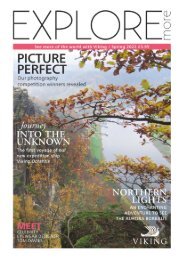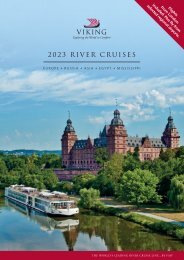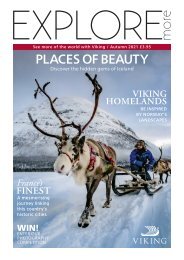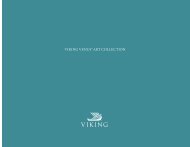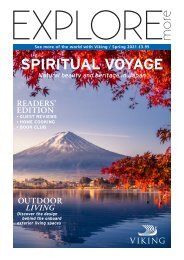Viking Traveller 2nd Issue
You also want an ePaper? Increase the reach of your titles
YUMPU automatically turns print PDFs into web optimized ePapers that Google loves.
LEGEND & LORE<br />
We delve into the history and meaning carved<br />
into the majestic totem poles of Alaska<br />
The totem poles of Alaska, created by coastal First<br />
Nations and indigenous groups of the Pacific<br />
Northwest, in particular the Tlingit, Tsimshian<br />
and Haida communities, are magnificent pieces of art<br />
that conjure up memories of people and events.<br />
Usually standing between three and 18 metres in<br />
height – although some can surpass 20 metres – poles<br />
were traditionally carved by men. Today, however,<br />
both men and women have become expert carvers of<br />
totem poles, often honing their skills after spending<br />
their childhood years watching experts in action.<br />
The word ‘totem’ can be traced to the Algonquian word<br />
odoodem, meaning “kinship group”. Typically created<br />
out of red cedar wood, most totem poles feature symbolic<br />
animals or human forms, as well as supernatural beings<br />
that chart a family’s lineage and history.<br />
Common crests include the thunderbird, wolf, grizzly<br />
bear, raven, beaver, frog, salmon and eagle, and<br />
important families often have more than one crest. In<br />
addition to family-related themes, totem poles can also<br />
be created to mark a special event or to commemorate a<br />
particular ancestor or legend. They can also be used as a<br />
point of welcome, or as a sign of remembrance, and can<br />
be erected to celebrate a family’s success.<br />
72 viking.com



